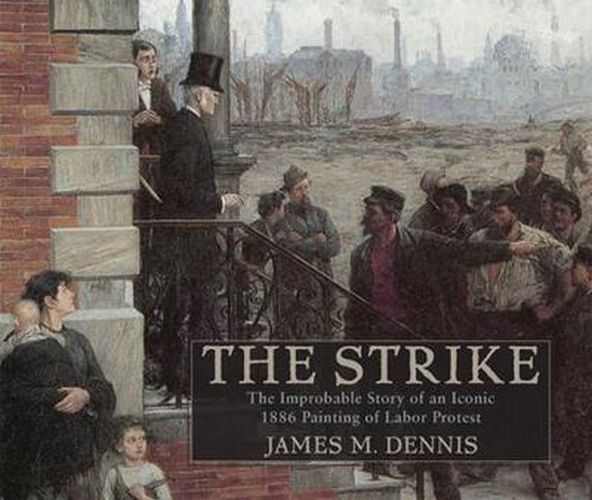Readings Newsletter
Become a Readings Member to make your shopping experience even easier.
Sign in or sign up for free!
You’re not far away from qualifying for FREE standard shipping within Australia
You’ve qualified for FREE standard shipping within Australia
The cart is loading…






Every work of art has a story behind it. In 1886 the German American artist Robert Koehler painted a dramatic wide-angle depiction of an imagined confrontation between factory workers and their employer. He called this oil painting The Strike. It has had a long and tumultuous international history as a symbol of class struggle and the cause of workers’ rights. First exhibited just days before the tragic Chicago Haymarket riot, The Strike became an inspiration for the labor movement. In the midst of the campaign for an eight-hour workday, it gained international attention at expositions in Paris, Munich, and the 1893 Chicago World’s Fair. Though the painting fell into obscurity for decades in the early twentieth century, The Strike lived on in wood-engraved reproductions in labor publications. Its purchase, restoration, and exhibition by New Left activist Lee Baxandall in the early 1970s launched it to international fame once more, and collectors and galleries around the world scrambled to acquire it. It is now housed in the Deutsches Historisches Museum in Berlin, Germany. Art historian James M. Dennis has crafted a compelling biography of Koehler’s painting: its exhibitions, acclaim, neglect, and rediscovery. He introduces its German-born creator and politically diverse audiences and traces the painting’s acceptance and rejection through the years, exploring how class and sociopolitical movements affected its reception. Dennis considers the significance of key figures in the painting, such as the woman asserting her presence in the center of action. He compellingly explains why The Strike has earned its identity as the iconic painting of the industrial labor movement.
$9.00 standard shipping within Australia
FREE standard shipping within Australia for orders over $100.00
Express & International shipping calculated at checkout
Every work of art has a story behind it. In 1886 the German American artist Robert Koehler painted a dramatic wide-angle depiction of an imagined confrontation between factory workers and their employer. He called this oil painting The Strike. It has had a long and tumultuous international history as a symbol of class struggle and the cause of workers’ rights. First exhibited just days before the tragic Chicago Haymarket riot, The Strike became an inspiration for the labor movement. In the midst of the campaign for an eight-hour workday, it gained international attention at expositions in Paris, Munich, and the 1893 Chicago World’s Fair. Though the painting fell into obscurity for decades in the early twentieth century, The Strike lived on in wood-engraved reproductions in labor publications. Its purchase, restoration, and exhibition by New Left activist Lee Baxandall in the early 1970s launched it to international fame once more, and collectors and galleries around the world scrambled to acquire it. It is now housed in the Deutsches Historisches Museum in Berlin, Germany. Art historian James M. Dennis has crafted a compelling biography of Koehler’s painting: its exhibitions, acclaim, neglect, and rediscovery. He introduces its German-born creator and politically diverse audiences and traces the painting’s acceptance and rejection through the years, exploring how class and sociopolitical movements affected its reception. Dennis considers the significance of key figures in the painting, such as the woman asserting her presence in the center of action. He compellingly explains why The Strike has earned its identity as the iconic painting of the industrial labor movement.